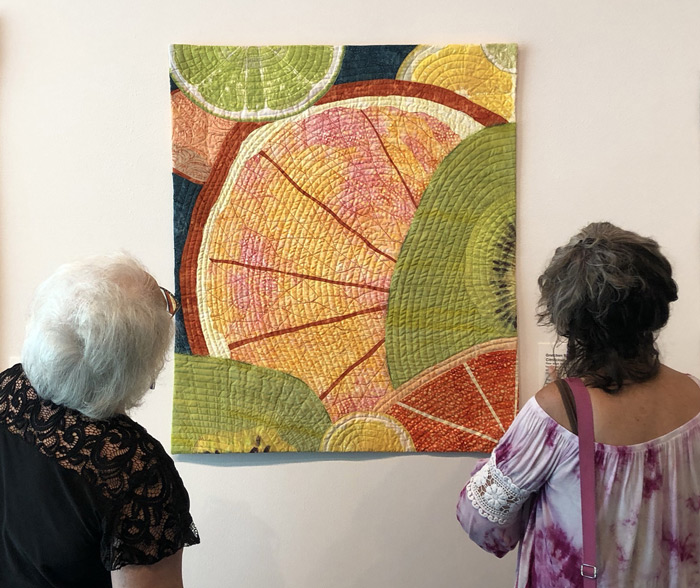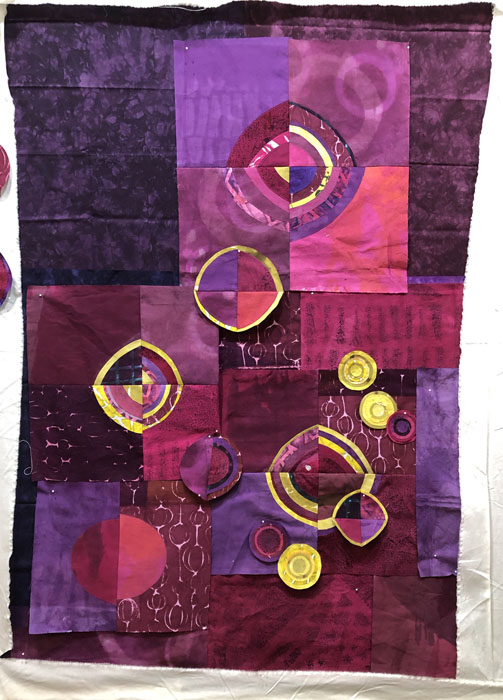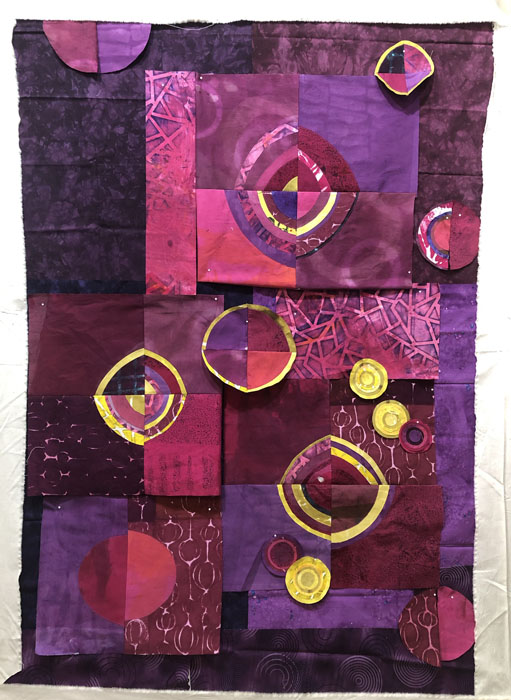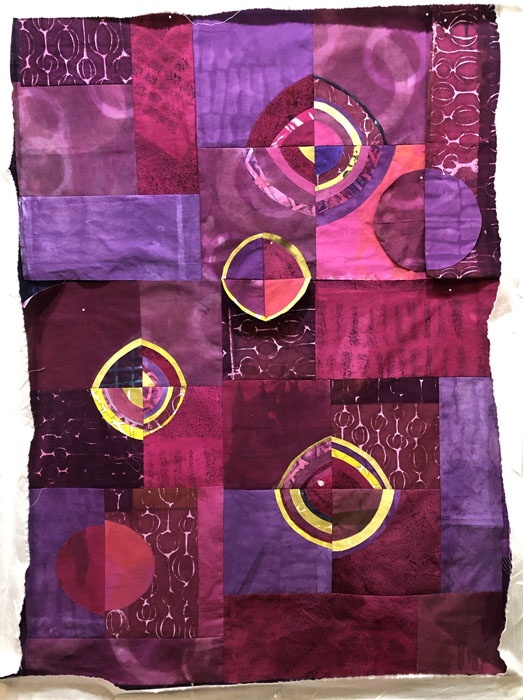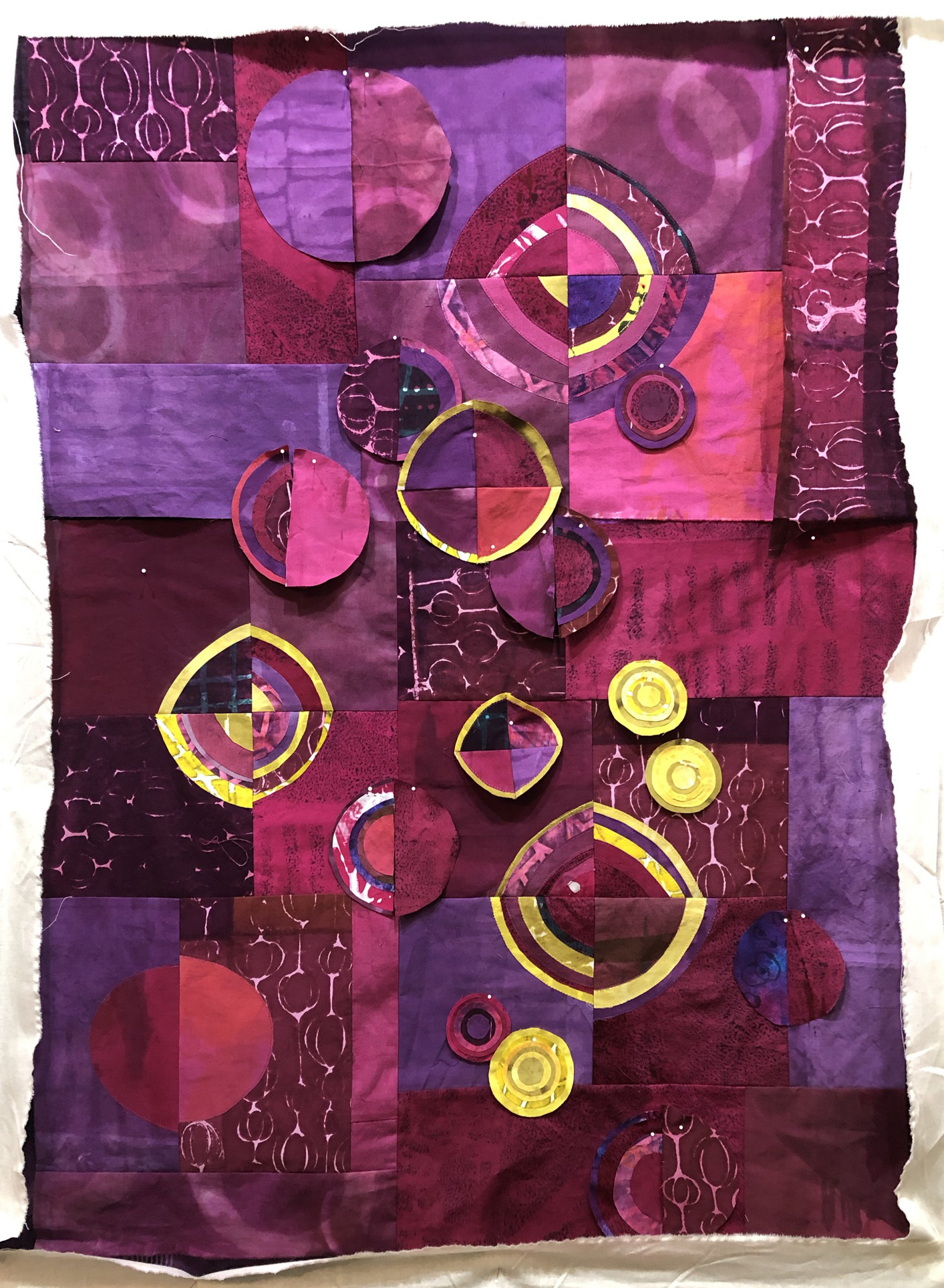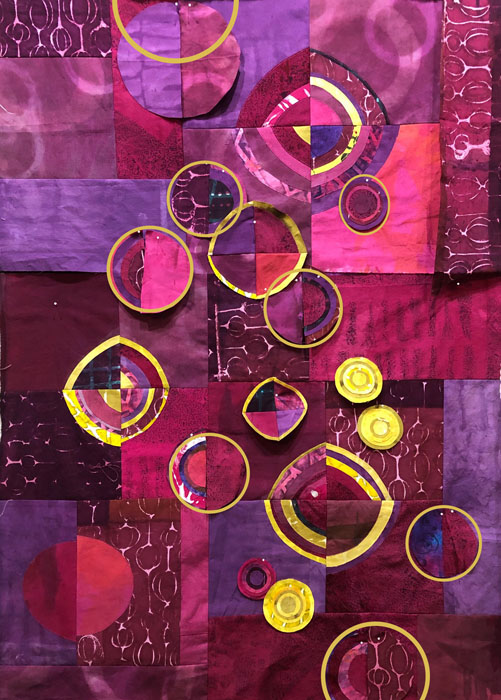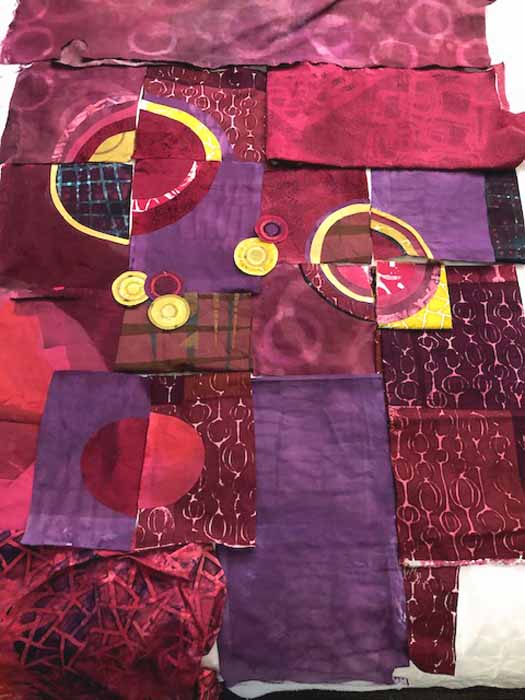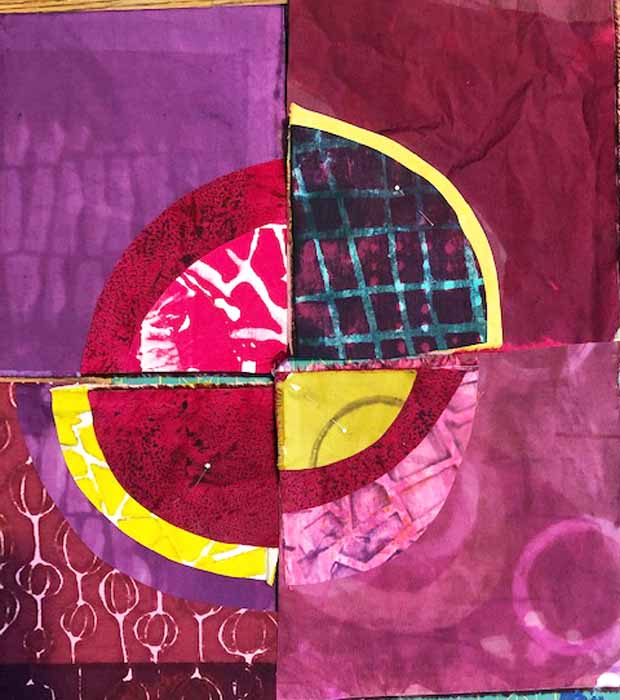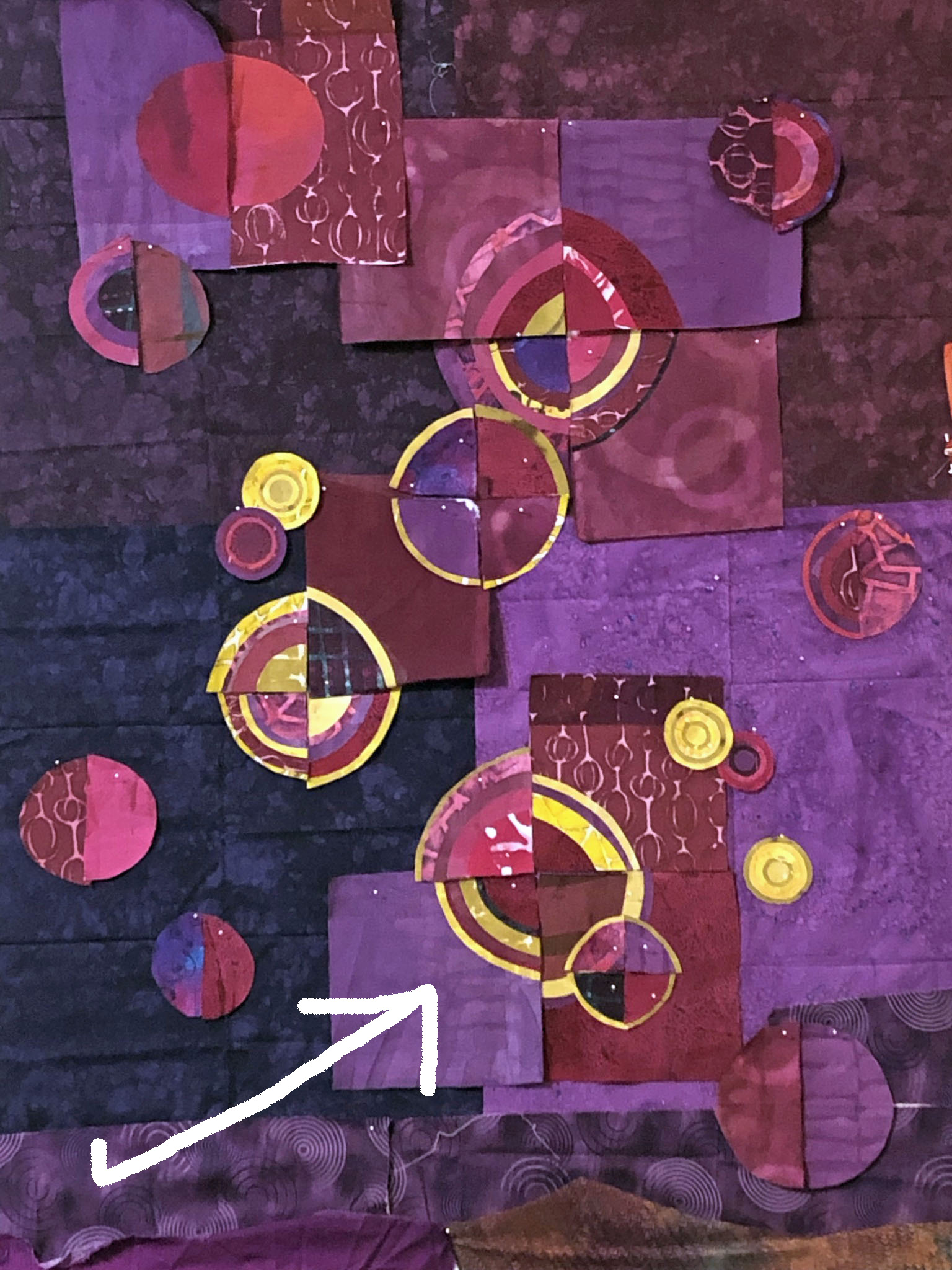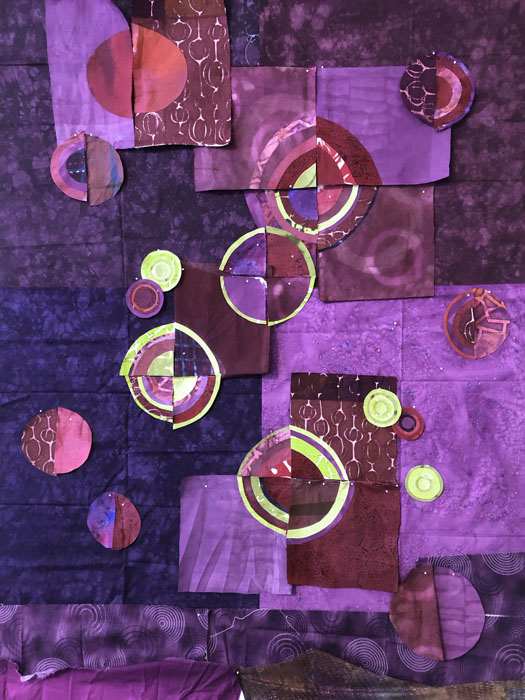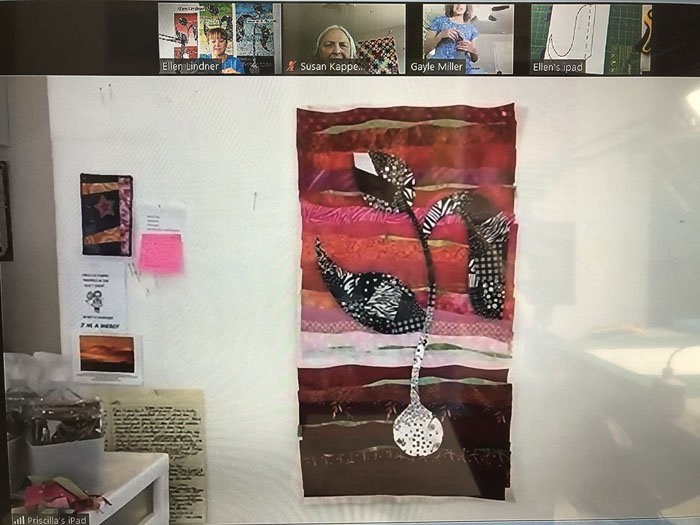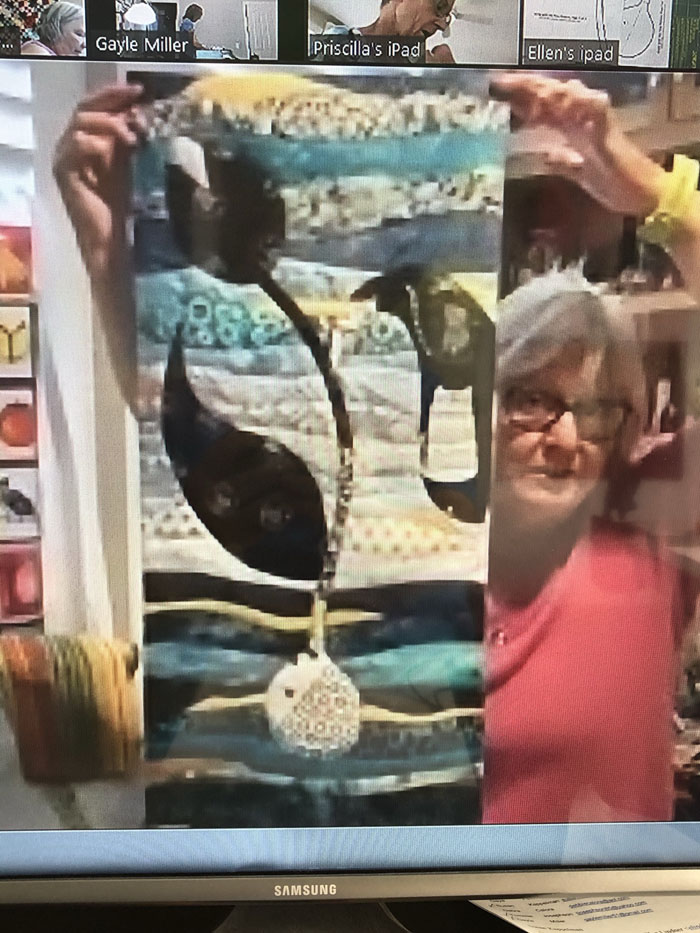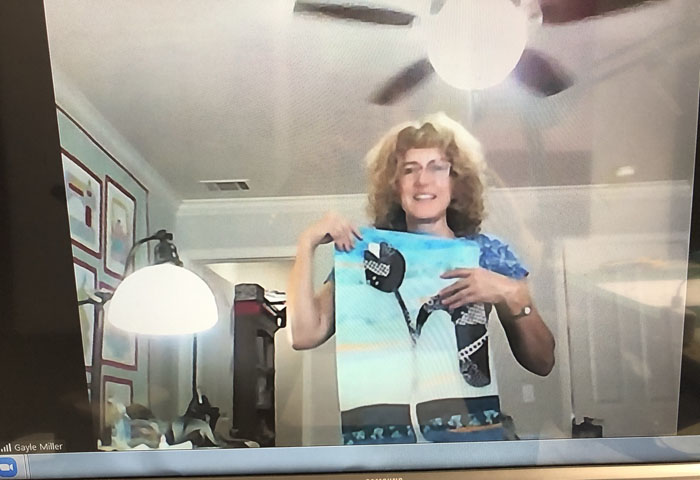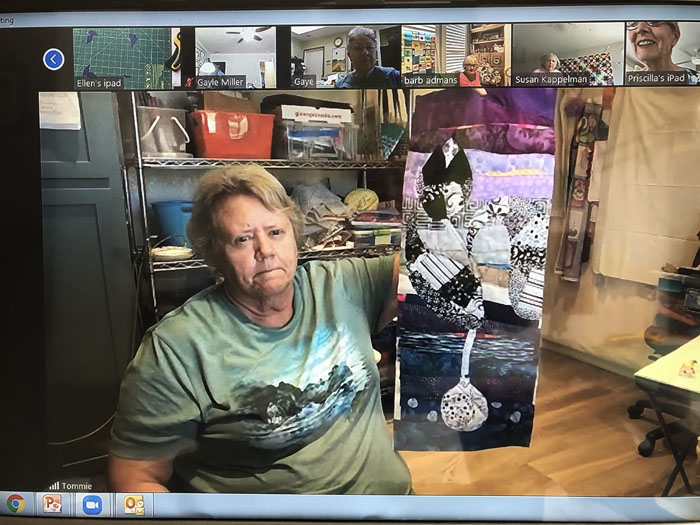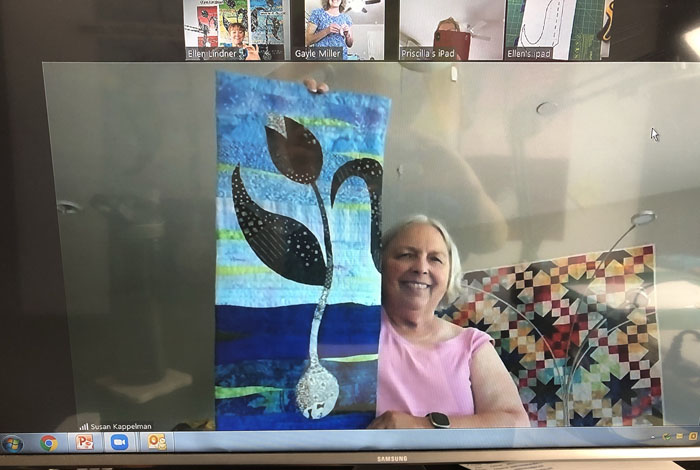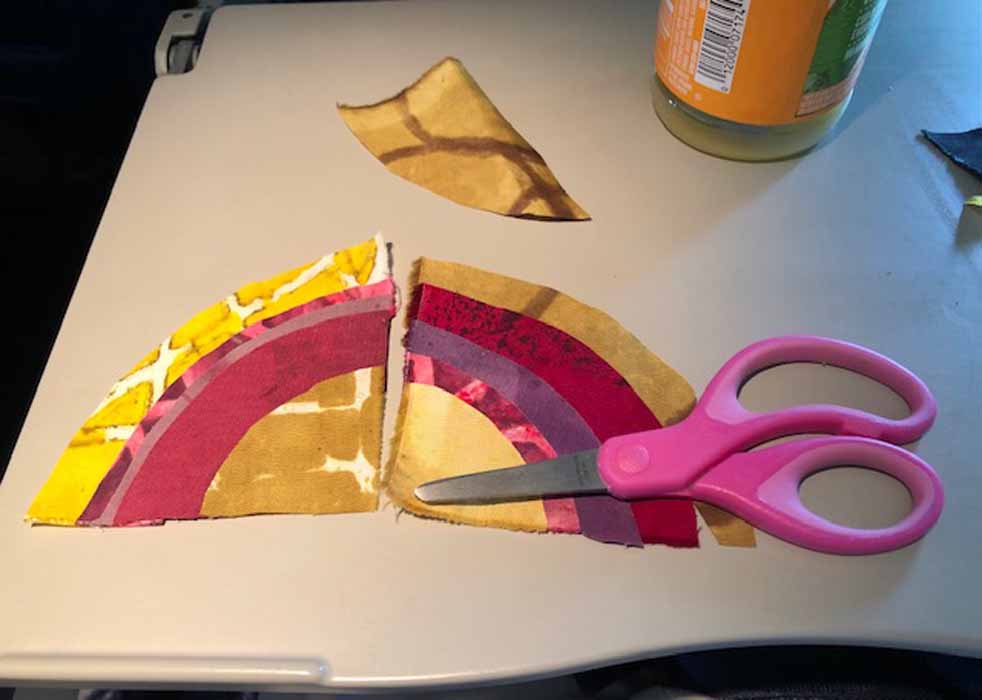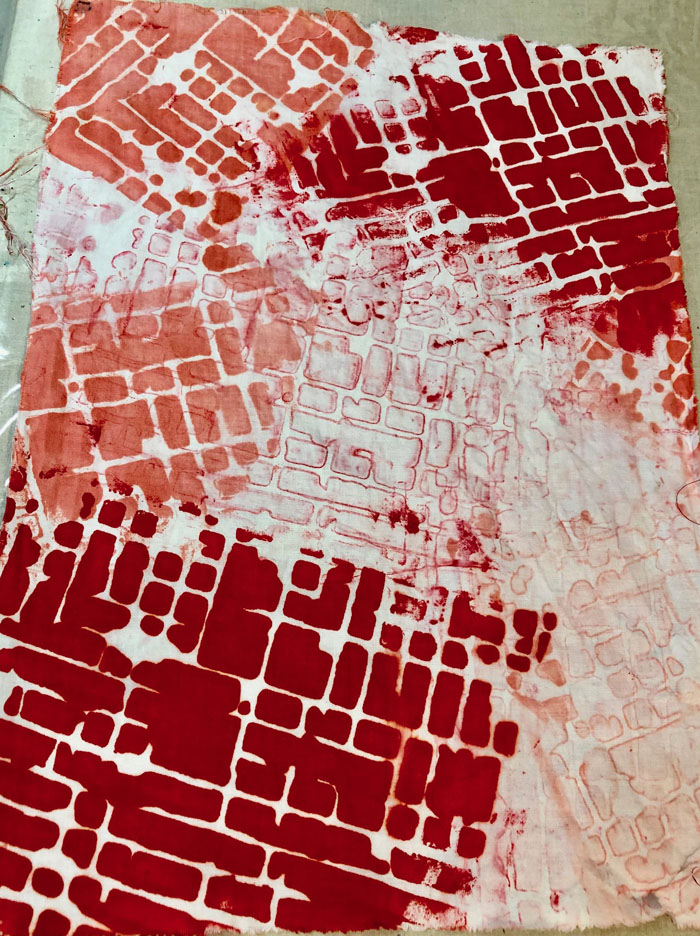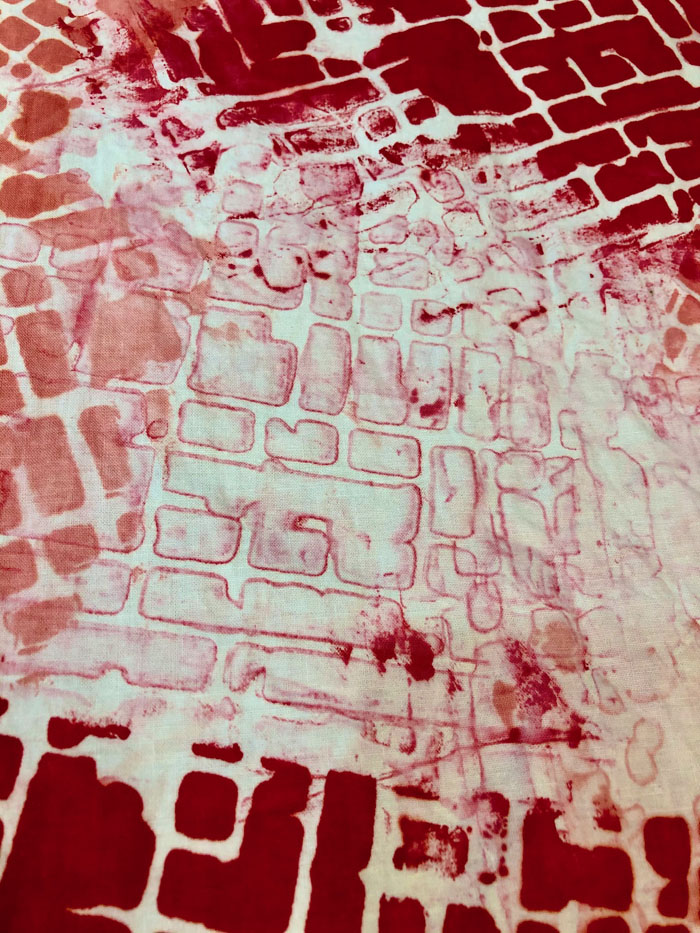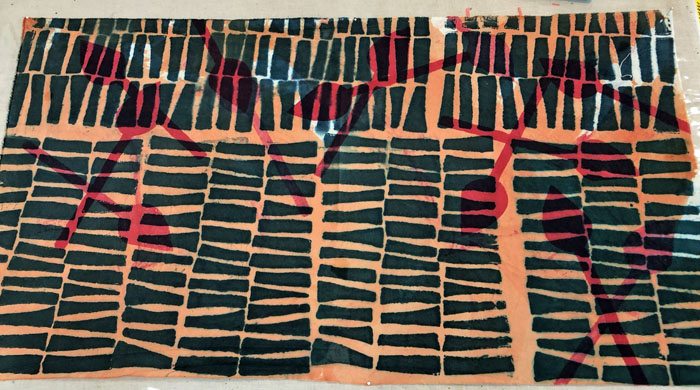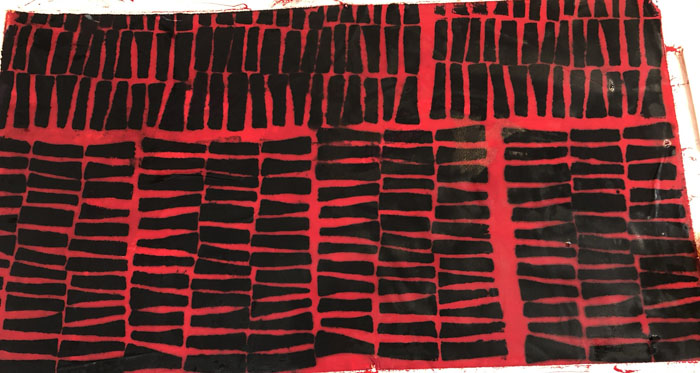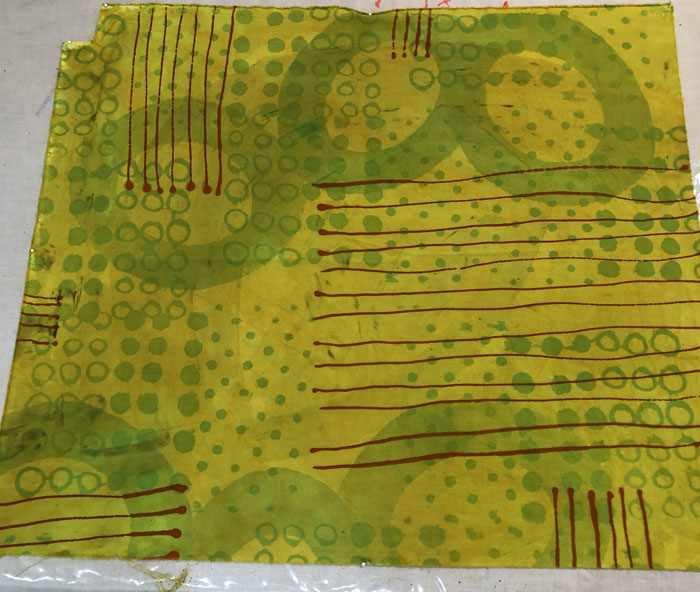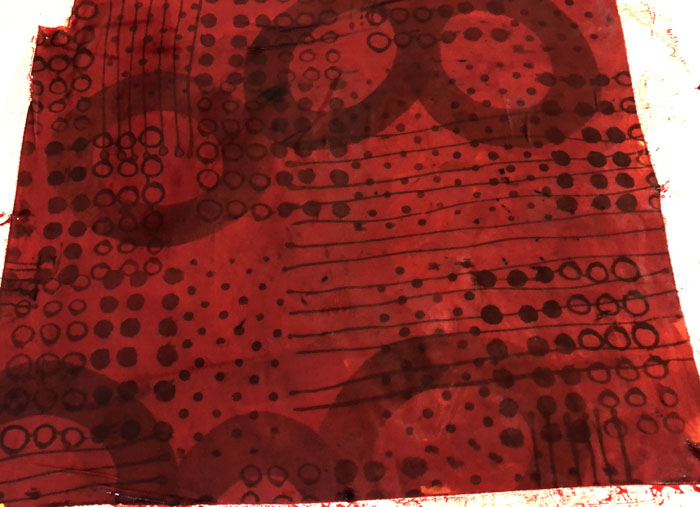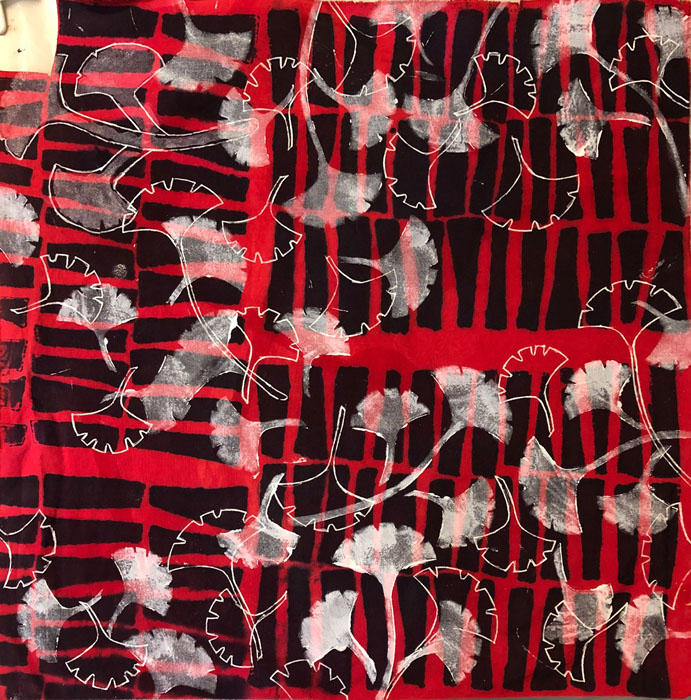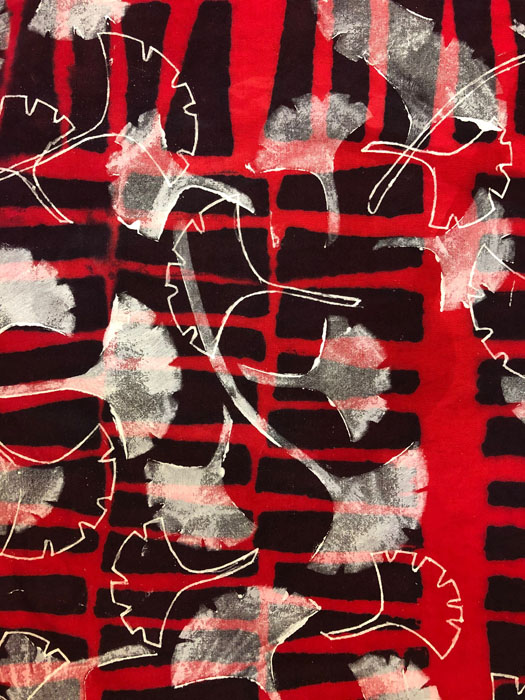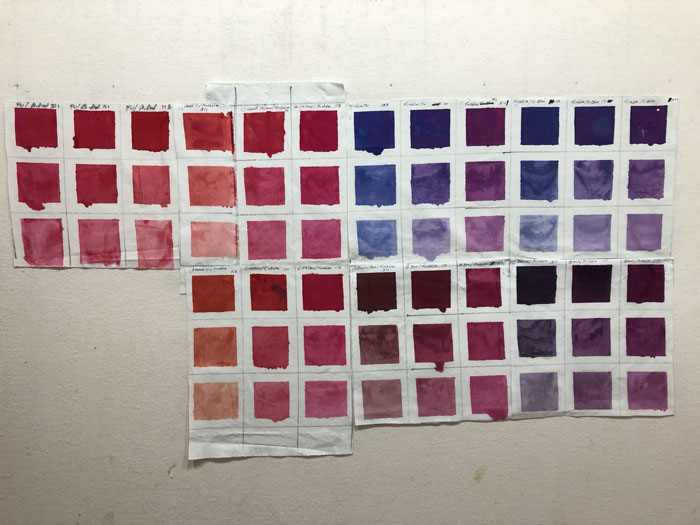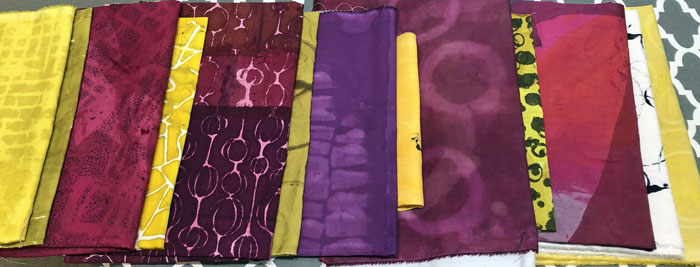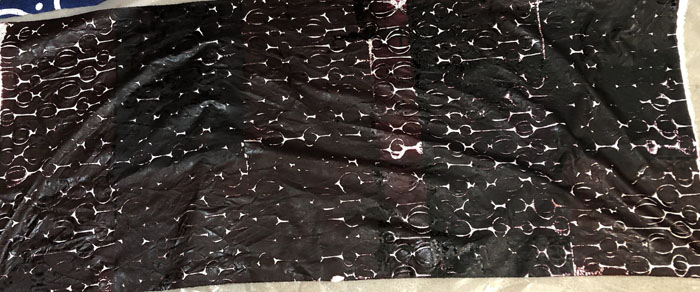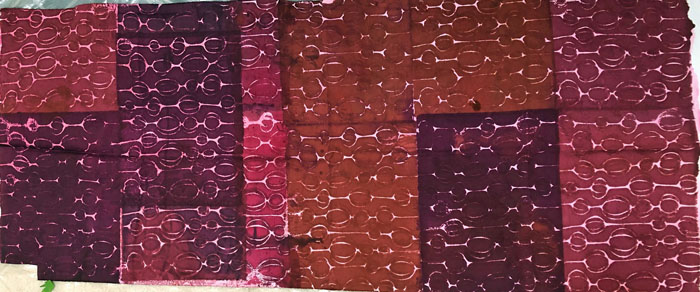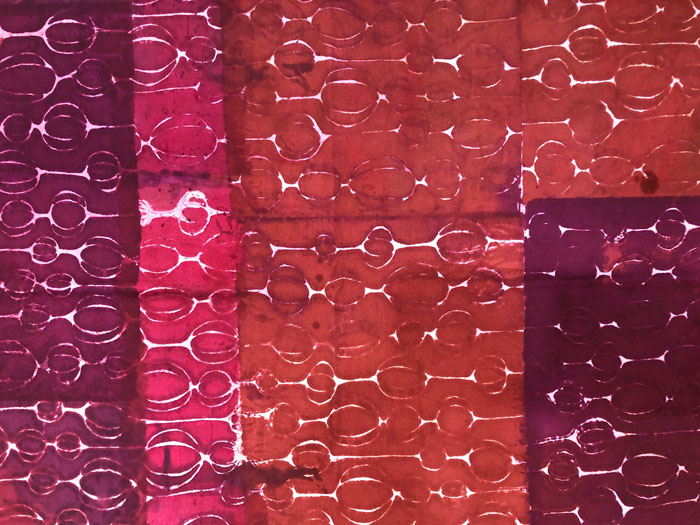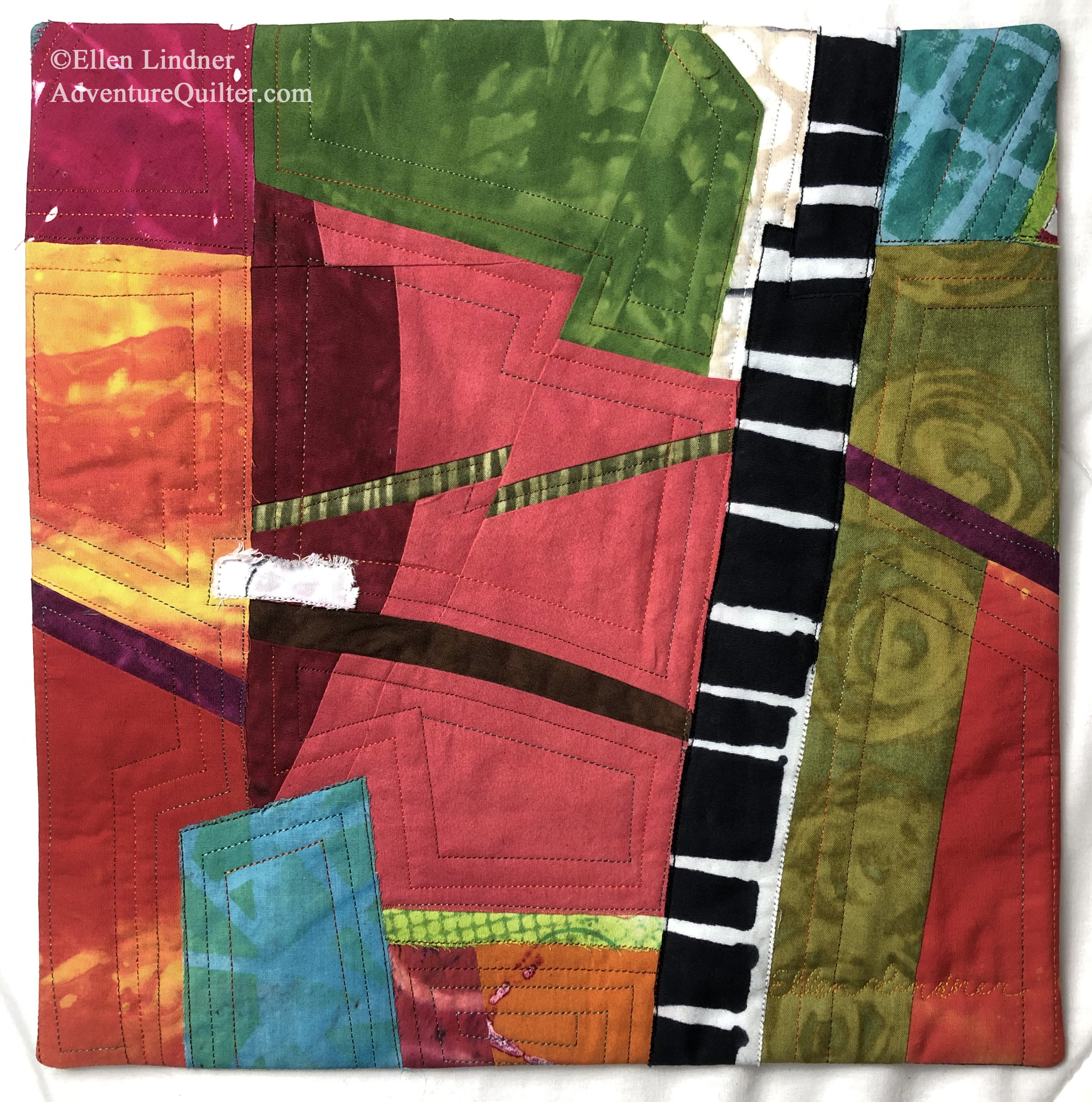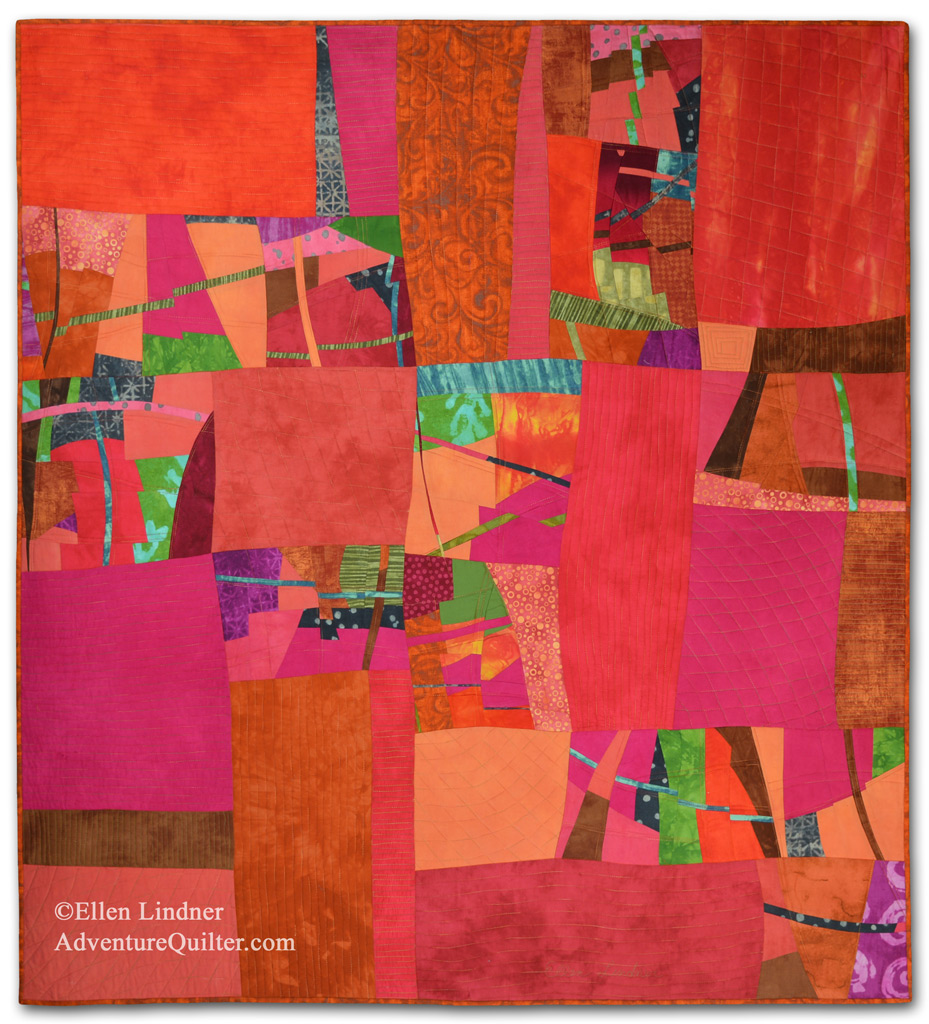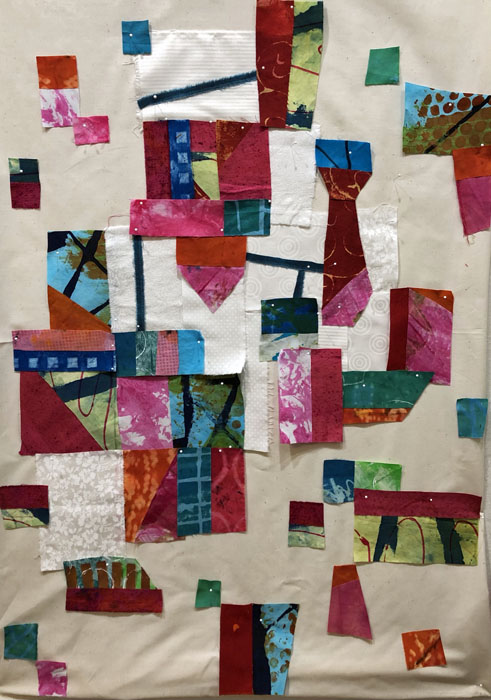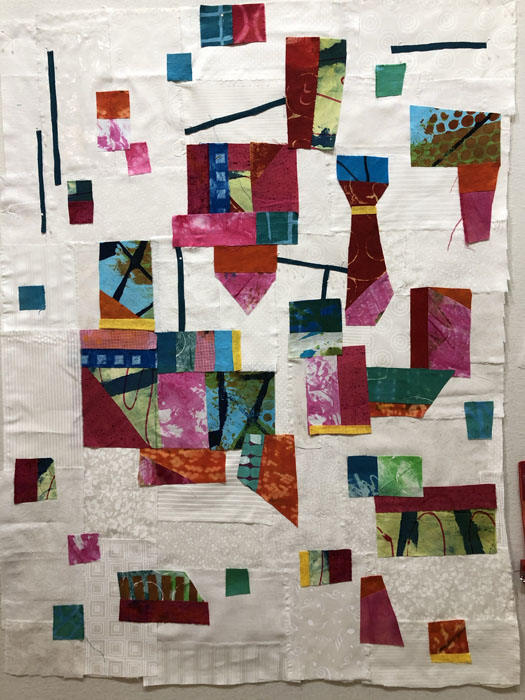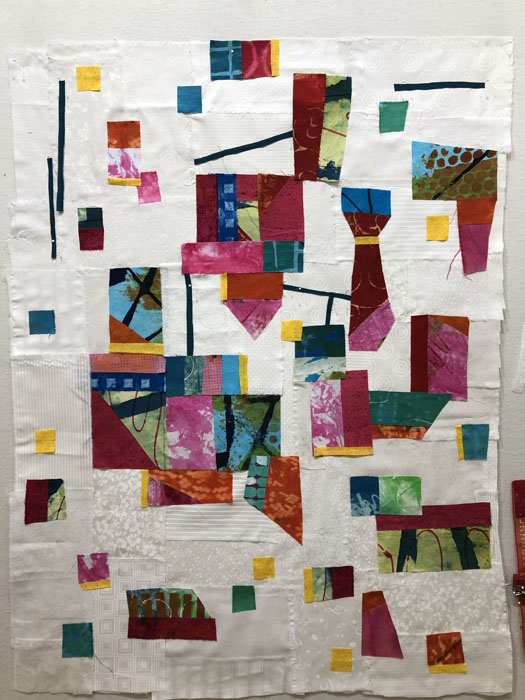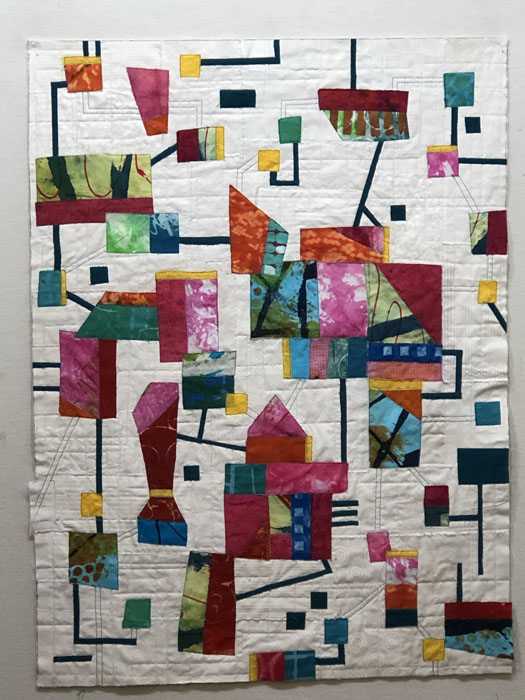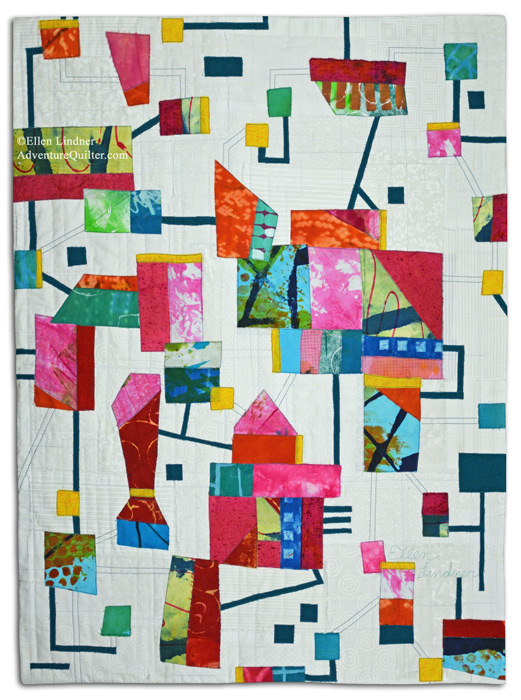It’s great to have my quilts, once again, traveling to real live art and quilt shows. Especially when I win an award! Such was the case with this quilt, Miscommunication. 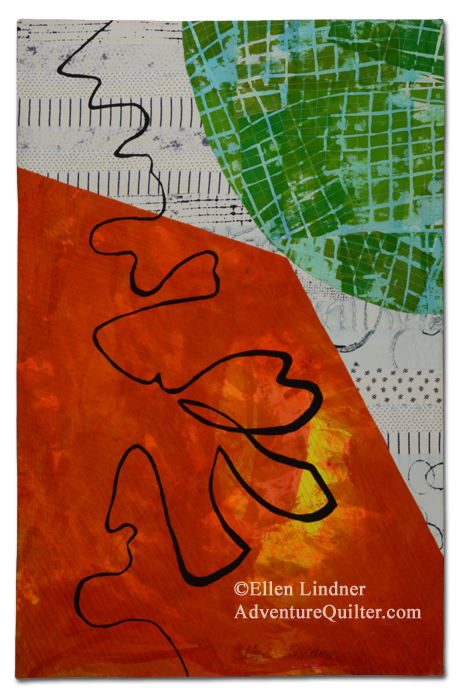
It won third place at the 2nd Biennial Fiber Arts National Juried Exhibition in Bedford, VA. How nice! This exhibit is on display through August 21st, if you happen to be in the area.
In addition, my quilt Melting Pot is part of the “Floridian Flavors” exhibit currently on display at the Leepa-Rattner museum in Tarpon Springs, FL.
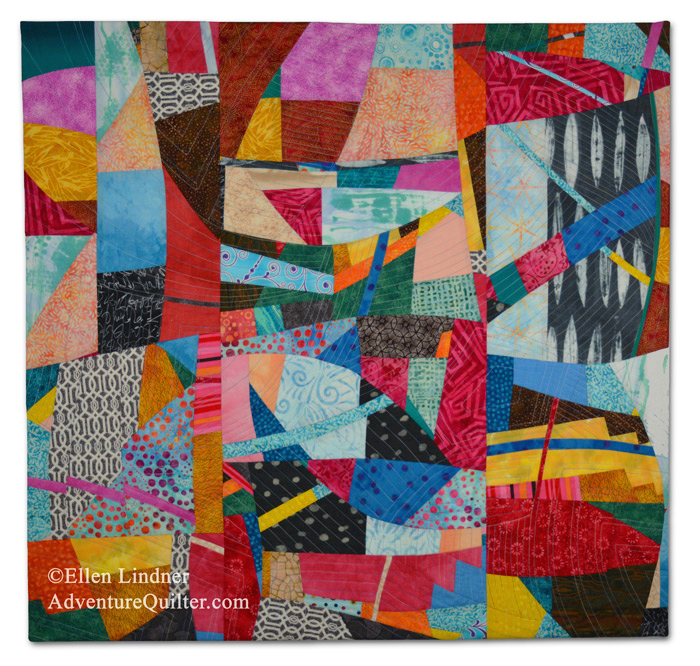 This exhibit features work made by the Florida members of SAQA (Studio Art Quilts Associates,) and will be on display through August 15th.
This exhibit features work made by the Florida members of SAQA (Studio Art Quilts Associates,) and will be on display through August 15th.
***A road trip is really worthwhile in this case, because just down the road, in Dunedin, FL, you’ll find THREE more wonderful art quilt exhibits at the Dunedin Fine Arts Center. One of them features work by the Tentmakers of Cairo and I can’t wait to see that!
I also got word that my quilt, Florida Native #2, has been accepted into the exhibit “Let the Sun Shine In.” This exhibit will be virtual, as well as on display in at least one gallery. (TBD.)
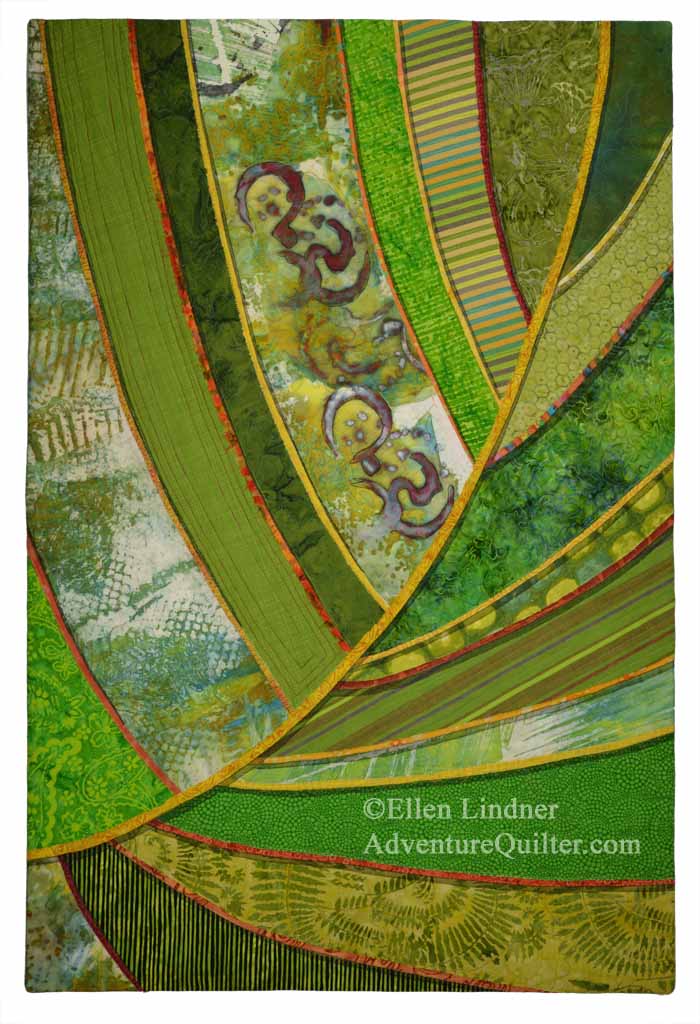 I hope you get to see some great quilts in person!
I hope you get to see some great quilts in person!
Ellen Lindner

